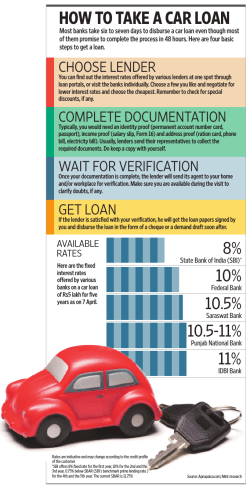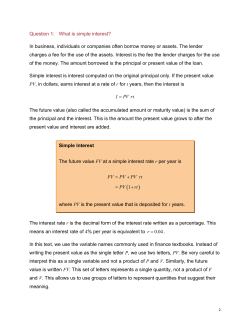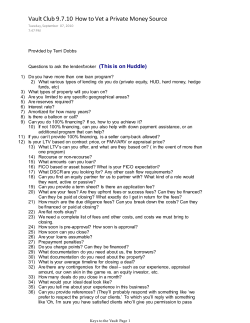
Read FAQs
May 13, 2015 KEY INFORMATION ON NEW MORTGAGE LENDING DISCLOSURES Under the Dodd-Frank Act, the Consumer Financial Protection Bureau (CFPB) is instituting new rules regarding disclosures under the Truth in Lending Act (TILA) and Real Estate Settlement Procedures Act (RESPA) that will affect all mortgage applications and real estate settlements. For mortgage applications submitted on or after August 1, 2015, consumers must receive a Loan Estimate (LE) no more than three business days after applying for a mortgage loan and a Closing Disclosure (CD) at least three business days prior to closing on the loan. The CFPB has placed strict limits on the changes that may occur during the new disclosure process. The new disclosure documents replace the Good Faith Estimate, the Truth-in-Lending Statements, and the HUD-1 Settlement Statement. The mortgage industry is revamping their systems to implement the new requirements but the transition may not be smooth given the abrupt switch from the old to the new process on August 1. In addition, CFPB’s required remedies for addressing inaccurate disclosures create further possibilities for disruptions in home sale and mortgage refinance transactions. Here are answers to frequently asked questions: What are the restrictions on changes from the Loan Estimate to the Closing Disclosure? The CFPB has established tolerance levels that govern how much a Loan Estimate provision can change at closing. There are three categories of change tolerances: Zero Tolerance . Charges disclosed on the Loan Estimate cannot increase at the loan closing. This covers: Lender and mortgage broker charges. Charges of affiliates of lender/broker (except for services not required by lender). Charges of unaffiliated third-party service providers if shopping is not allowed. Transfer taxes. 10% Aggregate Tolerance Unlimited Tolerance While individual charges may increase or decrease, the combined sum of all charges cannot increase by more than 10 percent. This covers: Disclosed amounts simply must be based on “best information reasonably available at the time” using “reasonable due diligence” but otherwise no limitation on increases. This covers: Charges of unaffiliated third-party service providers if shopping is allowed and the borrower selects the provider from the lender’s list or the lender selects such a provider. Charges of unaffiliated third-party service providers if shopping is allowed but the lender fails to provide a written list. Recording fees. Prepaid interest. Property insurance premiums. Amounts placed in escrow. Charges paid to thirdparty service providers selected by the borrower that are not on the lender’s list. Charges paid for thirdparty services not required by lender (may be paid to affiliate of lender). Are there exceptions to the restrictions on changes from the Loan Estimate to the Closing Disclosure? Allowable exceptions can occur when: Information provided by a mortgage loan applicant is inaccurate (or becomes inaccurate). The borrower requests a change in terms and/or services. The borrower does not qualify for the original loan offer. Locking in the mortgage interest rate after the Loan Estimate results in a change in discount points and/or lender/broker charges. The Loan Estimate expires (consumer does not indicate an intent to proceed within 10 business day after the LE is provided). For new construction, the closing is scheduled to occur more than 60 days after the initial Loan Estimate. What is required when permitted disclosure changes occur? The lender must issue a revised Loan Estimate within three business days after receiving information that a permitted change has occurred. However, the revised LE must be delivered at least four business days prior to closing. If there are less than four days between the time the revised LE would be provided and closing, the revisions can be provided on the Closing Disclosure. What happens if there are changes in the Closing Disclosure before the transaction is consummated? The lender must provide a revised CD and a new three day waiting period is required if: The APR has increased by more than 1/8 of a percent for fixed-rate loans and 1/4 of a percent for variable-rate loans. The loan product changes (e.g., fixed-rate to variable). A prepayment penalty provision is added. For other permitted changes, the lender must provide a revised CD but no additional waiting period is required. What are lenders required to do if a borrower’s charges at closing exceed what was disclosed on the Loan Estimate by a prohibited amount? The lender is required to refund the excess payment to the borrower no later than 60 days after closing and provide a corrected CD reflecting the refund. What circumstances could lead to disruptions in the mortgage origination process in the shift to the post-August 1, 2015 era? Triggering of the additional three-day waiting period due to changes in loan terms or type. Continuing lender uncertainty or confusion in interpreting CFPB’s new rules. Glitches in converting mortgage processing systems to the new CFPB requirements. Communication errors or misunderstandings between lenders and other participants in the mortgage transaction and bumps in the learning curve of mortgage processing personnel. Delays that result from lenders seeking to avoid absorbing overages on items that have a zero or limited change tolerance. 2
© Copyright 2025










